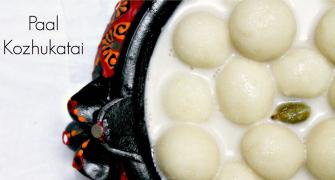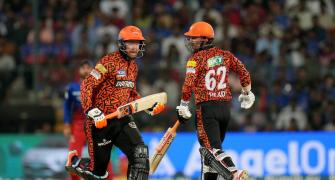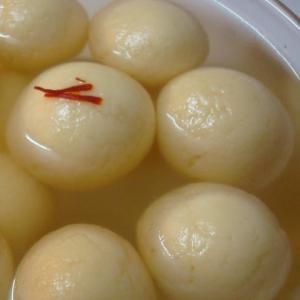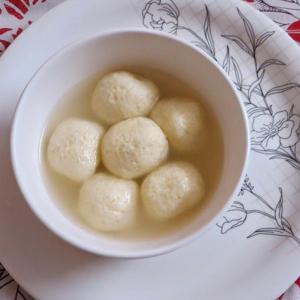'Having consumed thousands of the sickly sweet chenna globes of varying textures over the years, I must demur,' says Uttaran Das Gupta.
Illustration: Uttam Ghosh/Rediff.com
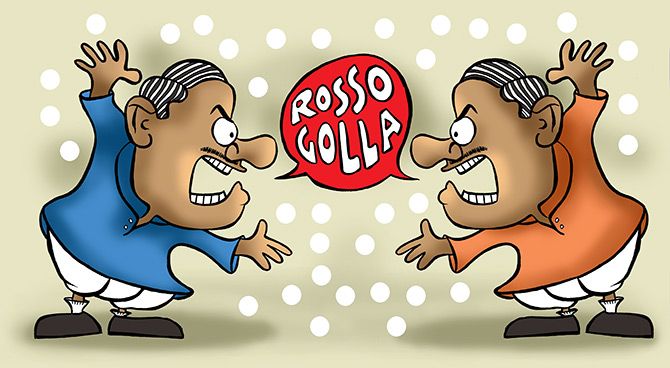
Last month, Bengalis too fond of their homeland (and I am not one of them) turned ecstatic after the Chennai-based Geographical Indications Registry declared that rasogolla originated in West Bengal.
Chief Minister Mamata Banerjee tweeted from London: 'Sweet news for us all. We are very happy and proud that #Bengal has been granted GI (Geographical Indication) status for Rasogolla.'
Other stakeholders were also quick to claim the victory.
Dhiman Das, owner of K C Das, and the descendant of the family which claims to be the inventor of rasogolla, declared, 'It is the victory of Bengal and residents of the state. There is a deep-rooted connect between Bengalis and rasogolla for ages.'
After all, this aligns perfectly with the state's tourism tagline: 'The Sweetest Part of India.'
The ecstasy was perhaps fuelled by a sense of victory -- rather rare for Bengal and Bengalis these days -- over the rival claimant to being the place of origin of rasogollas, Odisha.
The epic battle between the two states began in June 2015 when Odisha Science and Technology Minister Pradip Kumar Panigrahi set up a committee to find out the origin of the sweet. The state also declared June 30 as Rasogolla Dibasa.
Could the Bengali bhadralok remain silent in the face of such an affront?
The West Bengal government responded with its own investigative committees and legal appeals, finally winning the fight.
The 'battle' between two states reeling at the bottom of almost every indicator of social and economic development, however, reminds one of the conflict between Lilliput and Blefuscu over the right way to crack an egg.
But is the rasogolla really worth the fight?
Personally, having consumed thousands of the sickly sweet chenna globes of varying textures over the years, I must demur.
Surely no connoisseur of food, leave alone sweets, will choose a rasogolla as the best among the plethora that Bengali cuisine has to offer.
Take for example kheer kadam, with a moderate shell of chenna concealing a core of khoya, which gives it the look and feel of an exotic fruit, as its name suggests; or, a rosh-bhora, with a crust of a sandesh and the succulent surprise of gur in its belly; or the colourful chomchom; or the underappreciated kalo-jam.
In the nineties, some shops in south Calcutta came up with an innovation -- freezing sandesh -- and started selling it as 'ice cream sandesh' for the princely sum of Rs 10.
How can the plebeian rasogolla even begin to compete?
Tell that to the Bengalis! According to reports, the sale of the sweet shot up around 25 per cent since the state managed to get the GI tag for the rasogolla.
According to R K Paul, general secretary, Paschimbanga Mistanna Byabasayee Samity, 'The GI tag recognised the industry's efforts and customers' passion for the sweet. The development has caused euphoria among sweets-lovers.'
According to the estimates of the sweetmeat industry -- worth Rs 20,000 crore (Rs 200 million) when it was last valued 15 years ago -- rasogolla contributes about 20 per cent of its total revenue.
The industry is estimated to comprise 200,000 sweetmeat makers, providing employment to 750,000 people.
Food is, of course, not only about eating.
According to some food historians, the variety of sweets that are almost synonymous with Bengal, are also a result of the abundance of sugar cane in the state and the innovative powers of its artisans.
For instance, the monohara: An adaptation of the humble sandesh in a glass cup, prepared on the orders of the nawabs of Murshidabad in the 18th century.
The original delicacy of the monohara has almost disappeared in our more plebeian times.
There are some delightful stories about sweets also: Like the ladikeni, which was prepared for Lady Canning, the viceroy's wife; or the mihidana which was prepared for British judges visiting the princely state of Burdawan.
At one time in the 19th century, there were at least 200 such sweets; now, there are barely 70 left, reflecting as some claim, the lack of innovation in the industry.
The GI tag could be a much needed shot in the arm for it.
If Odisha has its way, however, things might take a bitter turn. The state government said it would also apply for a GI tag for its own version of the sweet, Odishara Rasagolla soon.
'GI registration for Banglar Rasogolla in no way affects the claim for a GI tag for Odishara Rasagolla. The Bengal and Odisha variants are different in colour, texture, taste, juice content, and method of manufacturing,' said Odisha Micro, Small, and Medium Enterprises Department Secretary L N Gupta.
Apparently, it is softer than its Bengali cousin, with a light brown colour, and is soaked in a different kind of syrup.
According to some historians, it was offered as prasad in the Jagganath temple in Puri as far back as the 12th century whereas the Bengali variant was created only in the 18th century.
In this slippery tug-of-war, however, everyone seems to have completely forgotten about National Award-winning actress and current member of the West Bengal assembly Deboshree Roy.
Lovers of Bengali B-grade films will remember how she seduced them all by shaking her hips to the Kavita Krishnamurthy number Ami Kolkatar Rasogolla in Rakta Lekha.
The film may have been, rightly, consigned to obscurity, but the song remains popular, and was reprised in a recent film, Cockpit.
Incidentally, Ms Roy, an acclaimed dancer, was trained in Odishi. If the residents of Bengal's neighbouring states now accuse it of cultural hegemony, I don't think they are wrong -- or being bitter about it.


